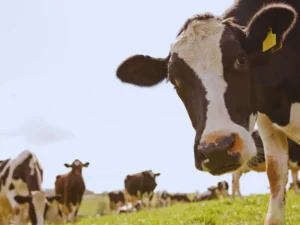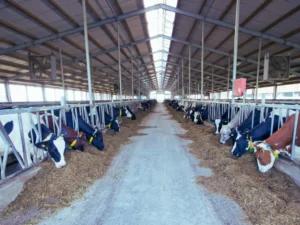Advancing Cattle Health Monitoring: The Impact of Sensor Technology in Feedlots
Summary
Quantified Ag, a Nebraska-based startup, developed a sensor-based ear-tag system to help feedlot operators detect illness in cattle earlier than traditional methods. By using accelerometers and temperature sensors, this innovative technology monitors cattle behavior and transmits data in real-time, enabling quicker responses to health issues. As a result, the system addresses key challenges in maintaining cattle health within confined animal feeding operations (CAFOs), offering a promising solution to reduce livestock mortality and improve feedlot efficiency.

The Role of Sensor Technology in Cattle Health Monitoring
Challenges in Traditional Cattle Health Management
Managing cattle health in large-scale feedlots presents many difficulties. With some operations housing up to a million cows, early illness detection is critical but often delayed. Traditionally, cowboys visually inspect cattle on horseback, but this method is slow and can miss subtle signs, such as minor changes in posture or movement. Since cattle naturally hide symptoms to avoid predators, detection becomes even harder. Fortunately, Quantified Ag’s sensor-based ear tags continuously monitor the animals, providing an efficient alternative to manual inspection.
How Sensor Technology Enhances Early Detection
Quantified Ag’s ear tags come equipped with accelerometers, temperature sensors, and a Semtech radio module. About the size of a pack of gum, these sensors gather data on cattle mobility, range of motion, and temperature. The data is wirelessly transmitted to a gateway, using LoRa communication protocols to send it to a cloud platform for analysis. Consequently, feedlot operators can easily identify behavioral outliers, flagging cattle that show early signs of illness.
Implementation of Sensor-Based Monitoring in Feedlots
Pilot Testing in Nebraska CAFOs
Quantified Ag’s technology has been tested in two Nebraska feedlots—Darr Feedlot in Lexington and Midwest Feeding Company near Milford. In these locations, 1,200 cattle were fitted with the sensors for evaluation. These feedlots, with capacities of 40,000 and 14,000 head respectively, use the sensor data to detect illnesses like bovine respiratory disease, which impacts cattle growth. By catching illnesses one to three days earlier than human inspectors, the system gives a significant time advantage for treatment.
Economic and Health Benefits of Early Detection
Early illness detection brings economic benefits for feedlots. Bovine respiratory disease, the most common illness in CAFOs, slows growth rates and raises treatment costs. By identifying sick animals early, Quantified Ag’s system minimizes drug treatments and avoids expensive veterinary interventions. These savings help feedlots comply with the Veterinary Feed Directive, reducing the need for excessive antibiotics. Ultimately, healthier cattle and lower mortality rates lead to improved feedlot efficiency.
Technological Advancements and Future Applications
Leveraging LoRa Communication in Feedlot Environments
One key to Quantified Ag’s success is its use of LoRa technology. LoRa, a low-power wide-area network (LPWAN), enables long-range communication between sensors and gateways, even across vast feedlot environments. A single LoRa gateway installed at each feedlot can collect data from up to 1,200 sensors, covering large areas with minimal infrastructure. This technology provides a scalable solution for feedlots aiming to improve cattle health monitoring.
Future Potential of Sensor-Based Monitoring in Agriculture
Quantified Ag’s solution is part of a larger trend toward integrating IoT technologies into agriculture. In the future, more advanced metrics—such as stress levels, fertility, and detailed behavioral analysis—could be added to sensor technology. These insights would further improve feedlot management by optimizing feeding schedules, preventing disease outbreaks, and enhancing overall animal welfare. Moreover, reusing sensors after slaughter will reduce costs and support sustainability.

Comparison of Traditional Cattle Monitoring and Sensor-Based Monitoring
| Monitoring Method | Detection Speed | Accuracy | Cost Efficiency | Health Monitoring Parameters |
| Traditional Visual Inspection | Slow (Days to weeks) | Low (Depends on visual cues) | High labor costs, delayed treatment | Basic (Only visible symptoms) |
| Sensor-Based Monitoring | Fast (1-3 days earlier) | High (Real-time data) | Lower treatment costs, reduced mortality | Advanced (Mobility, temperature) |
This table highlights the advantages of sensor-based monitoring over traditional methods, emphasizing its faster detection times, increased accuracy, and overall cost efficiency in feedlot environments. By integrating this technology, feedlots can achieve better health outcomes and optimize cattle management.
